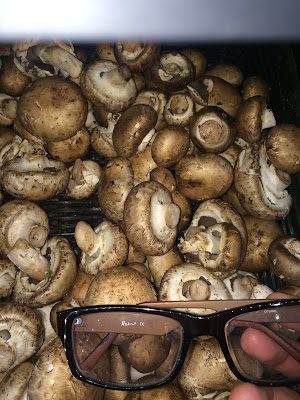 This is a photo of myself, and I am an example of a heterotroph. A heterotroph is an organism that cannot create its own energy, and therefore needs organic compounds (carbon) to grow and create energy. As of yet, I am not able to undergo photosynthesis therefore I am still a heterotroph.
This is a photo of myself, and I am an example of a heterotroph. A heterotroph is an organism that cannot create its own energy, and therefore needs organic compounds (carbon) to grow and create energy. As of yet, I am not able to undergo photosynthesis therefore I am still a heterotroph.AP Biology Biological Collection Photo Blog
Sunday, September 6, 2015
Heterotroph
 This is a photo of myself, and I am an example of a heterotroph. A heterotroph is an organism that cannot create its own energy, and therefore needs organic compounds (carbon) to grow and create energy. As of yet, I am not able to undergo photosynthesis therefore I am still a heterotroph.
This is a photo of myself, and I am an example of a heterotroph. A heterotroph is an organism that cannot create its own energy, and therefore needs organic compounds (carbon) to grow and create energy. As of yet, I am not able to undergo photosynthesis therefore I am still a heterotroph.Radial Symmetry
This is a photo of a starfish, which is one of the best examples of radial symmetry that can be found in nature. Radial Symmetry, as opposed to bilateral symmetry and asymmetry, is a basic body layout in which the organism at hand can be simply divided any which way along a central axis. The radial symmetry is easily observed on the underside of this starfish.
Basidiomycete
This is a picture of mushrooms, and they are an example of a basidiomycete. The phylum of Basidiomycota, consists of fungi made up of filaments known as hyphae. Despite being produced for human consumption, these mushrooms still exemplify one member of the phylum of Basidiomycota that also includes other various types of fungi.
Long Day Plant
This is a photo of lettuce, which is an example of a long day plant. Long day plants are plants that only flower/grow after being exposed to a certain duration of sunlight. This time often varies from plant to plant. Some examples of long day plants include radishes, irises, and of course lettuce. Lettuce is the perfect example of a long day plant because it takes a long time underneath sunlight to grow.
Cuticle Layer of a Plant
 Due to transpiration, plants will lose large amounts of water over time through the pores in their leaves. However, certain plants have a waxy cuticle layer. This layer prevents water from going into or out of the leaves of the plant. As you can see in this picture, the waxy cuticle layer composed of cutin that covers the epidermal cells of this leaf will not allow water inside of it therefore, the water rests on the surface of the leaf.
Due to transpiration, plants will lose large amounts of water over time through the pores in their leaves. However, certain plants have a waxy cuticle layer. This layer prevents water from going into or out of the leaves of the plant. As you can see in this picture, the waxy cuticle layer composed of cutin that covers the epidermal cells of this leaf will not allow water inside of it therefore, the water rests on the surface of the leaf.Population
 This is a photo of a large gathering of people inside of a church. This photo is a representation of a population. A population is the total amount of all members of a group or species that live in a specific area. In the study of ecology, the population of a certain group or species is determined using the Lincoln Index.
This is a photo of a large gathering of people inside of a church. This photo is a representation of a population. A population is the total amount of all members of a group or species that live in a specific area. In the study of ecology, the population of a certain group or species is determined using the Lincoln Index.Homeostasis
 In this photo we see geese. These geese are endothermic, and therefore must maintain a stable internal body temperature. They do this by performing one of the key characteristics of life, which is homeostasis. Homeostasis is the ability for organisms to maintain stable internal conditions such as pH and temperature as well as produce negative feedback to help rectify bodily issues. Without homeostasis, these geese would die.
In this photo we see geese. These geese are endothermic, and therefore must maintain a stable internal body temperature. They do this by performing one of the key characteristics of life, which is homeostasis. Homeostasis is the ability for organisms to maintain stable internal conditions such as pH and temperature as well as produce negative feedback to help rectify bodily issues. Without homeostasis, these geese would die.
Subscribe to:
Comments (Atom)


